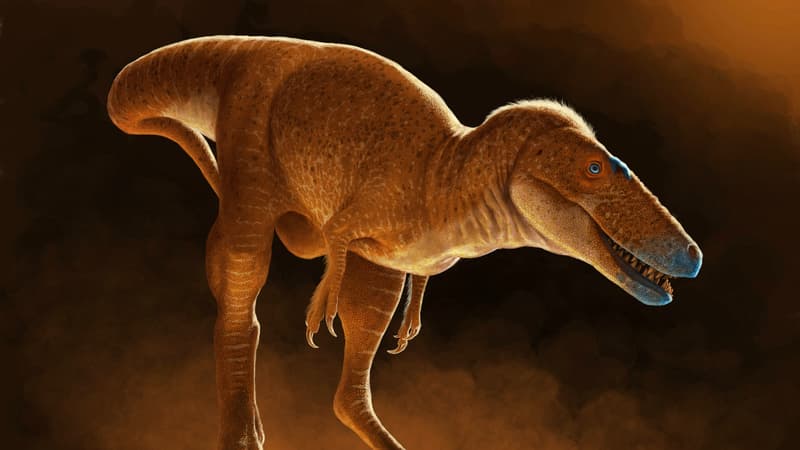Scientists have discovered a new representative of Tyrannosaurida, rewriting the history of the famous T-Rex family, thanks to fossils so far identified who have been sleeping in the drawers of a Mongol Institute for 50 years.
This thin ancestor of Tyrannosaurus Rex Massif “would have been the size of a very large horse,” describes Zelenitsky, paleontologist at the University of Calgary (Canada) and co -author of a study published on Wednesday, June 11 in nature. It was about four meters long and weighed 750 kg.
The fossils were exhumed in southeastern Mongolia in the early 1970s. But at that time, they were erroneously identified as those of an Alecrosaurus, another member of the Tyrannosauridae family.
For almost half a century, they remained in the drawers of the Paleontology Institute of the Mongolian Academy of Sciences, in Oulan-Bator. Until a doctoral student, Jared Viris, visiting this country without coastline between China and Russia, realizes that something was wrong, says Zelenitsky.
“It is possible that other discoveries of this type sleep in other museums, simply not recognized,” he said.
“Check the family tree of the tyrannosaurs”
In reference to the “King” T-Rex, the new species was baptized Khankhuulu Mongoliieisis, “the dragon prince of Mongolia.” “The term ‘prince’ refers to a primitive and smaller tyrannosaurus,” explains Zelenitsky, in words reported by the BBC.
Tyranosaurs are a two -way carnivorous dinosaurs superfamille. However, the first tyrannosauroids were small.
Its discovery “has allowed us to clarify many elements of the previously disorderly family history of the Tyrannosauridae”, of which the T-Rex is the last representative, explains Zelenitsky.
“These were very small fast feet predators who lived in the shadow of other advanced predators,” Jared Viris added. According to the study, Khankhuulu Mongolieísis has weighed around 750 kg, approximately eight times less than a T-Rex. “It is a transition fossil between the previous ancestors and the powerful tyrannosaurus,” explains Zelenitsky to our British colleagues.
“It helped us review the family tree of the tyrannosaurs and rewrite what we know about the evolution of tyrannosaurs,” he adds.
Migration
The T-Rex was the supreme predator in North America up to 66 million years before our time, when a larger asteroid that Mount Everest crashed in the Gulf of Mexico. Three quarters of life have been erased, including all dinosaurs, with the exception of those who have evolved to become birds.
Some 20 million years before, Khankhuulu Mongoliensis, or a member very close to his family, would have emigrated from Asia to North America through the land route that linked to Siberia and Alaska at that time.
This would have allowed Tyrannosauridae to evolve through the American continent. Paleontologists think that one of these species would have returned to Asia, where two subgroups would have emerged.
Some weighed less than a ton and had a very long snout, which earned them the nickname of “Pinocchio Rex”. The others were gigantic, such as the colossal Tarbosaurus, just smaller than the T-Rex.
One of these great dinosaurs would have taken North America again, evolving to the T-Rex, which reigned there for two million years.
Source: BFM TV


